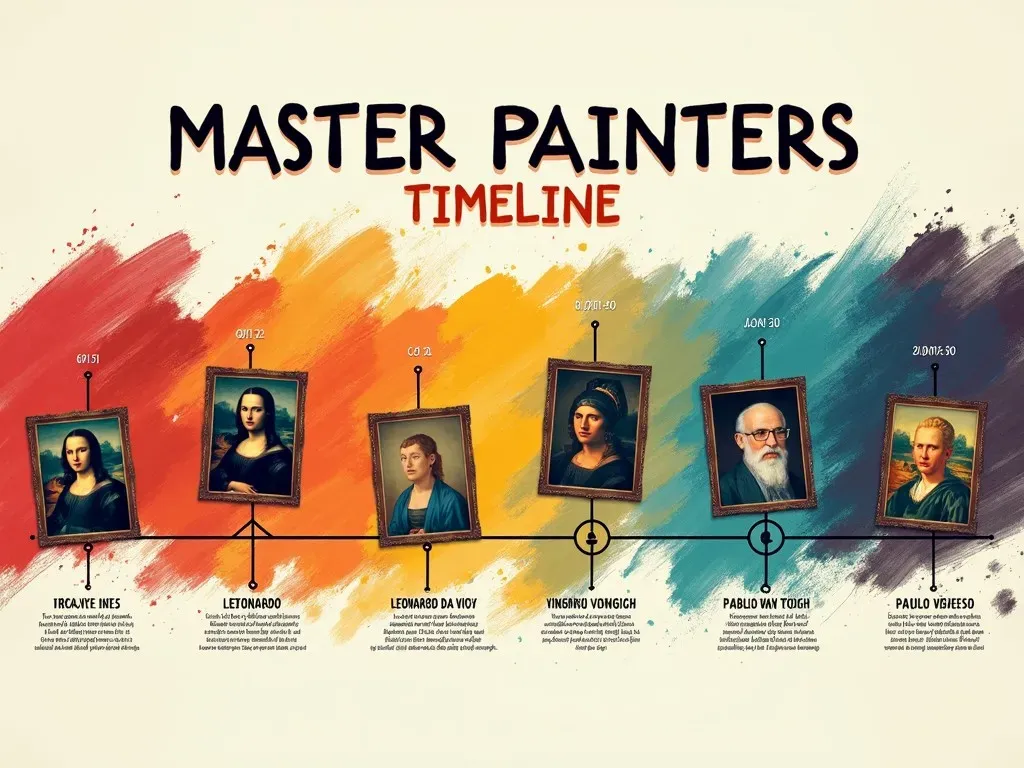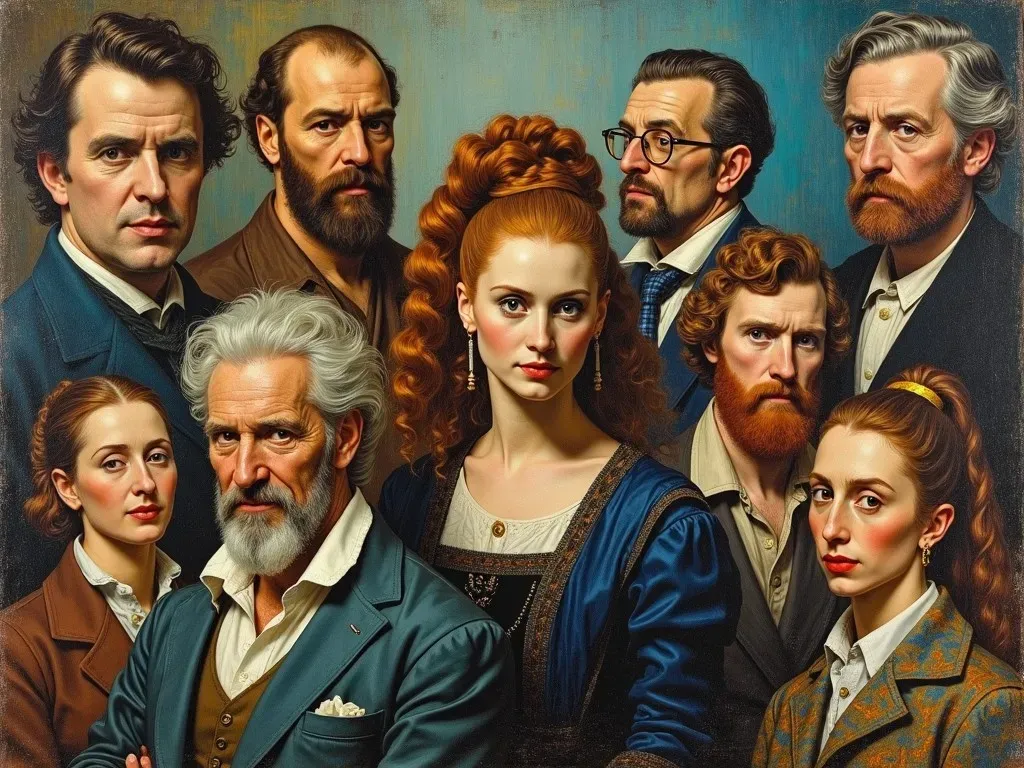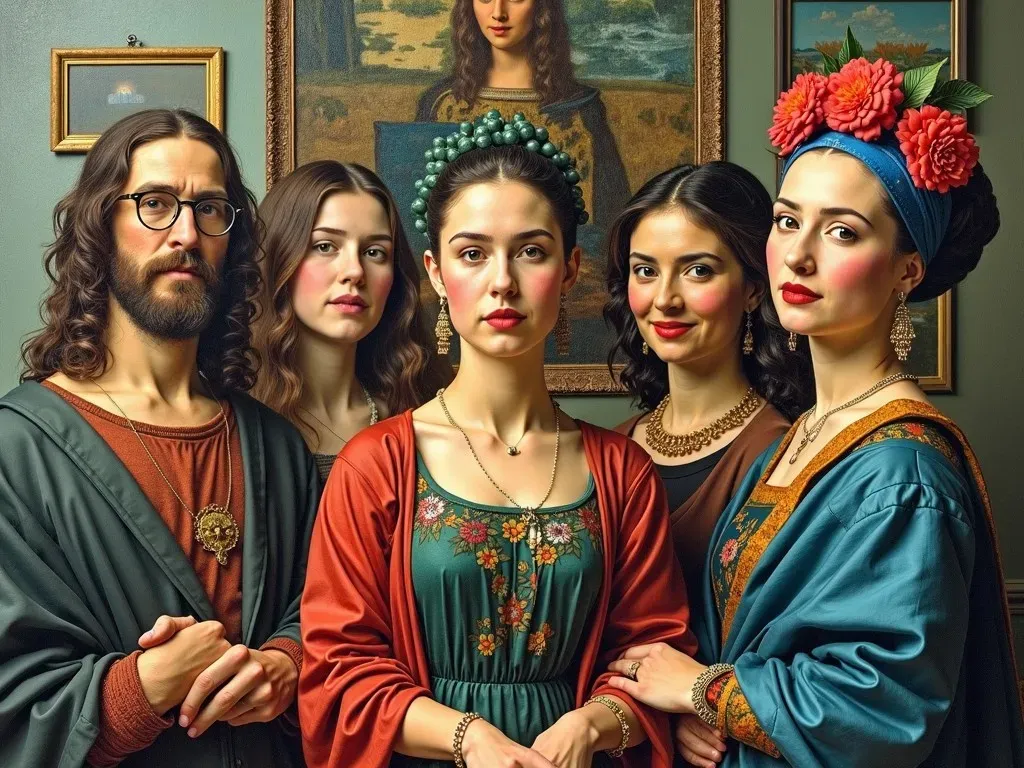The master painters list is a curated compendium of some of the greatest artists whose work has defined and transformed the world of visual art across centuries. From the grandeur of Renaissance frescoes to the stirring strokes of Impressionism, this list showcases the brilliance of old masters and their storied contributions to art. Dive into the rich history and profound talent of these artistic giants!
The Great Masters of Art: A Timeline
Art has evolved through various periods, with numerous influential artists leaving their indelible mark. Here’s a focused timeline highlighting some of the pivotal master painters from different art movements:
| Time Period | Artist | Key Works |
|---|---|---|
| 13th Century | Giotto di Bondone | Scrovegni Chapel Frescoes |
| 15th Century | Leonardo da Vinci | Mona Lisa, The Last Supper |
| 16th Century | Michelangelo Buonarroti | David, Sistine Chapel Ceiling |
| 17th Century | Rembrandt van Rijn | Night Watch, The Anatomy Lesson |
| 18th Century | Francisco Goya | Third of May 1808, The Sleep of Reason Produces Monsters |
| 19th Century | Vincent van Gogh | Starry Night, Sunflowers |
| 20th Century | Pablo Picasso | Guernica, Les Demoiselles d’Avignon |

This table not only demonstrates the breadth of time that these artists have spanned but also emphasizes their distinctive contributions during their respective eras.
Renowned Master Painters and Their Signature Styles
Leonardo da Vinci (1452-1519)
- Style: High Renaissance
-
Notable Works:
- Mona Lisa
- The Last Supper
Leonardo is celebrated for his mastery of chiaroscuro and linear perspective, stunning detail, and the enigmatic expressions of his subjects.
Michelangelo (1475-1564)
- Style: Renaissance
-
Notable Works:
- David
- The Creation of Adam (Sistine Chapel)
Michelangelo’s work embodies the ideal of the human form, characterized by intricate anatomical precision and grandeur.
Rembrandt van Rijn (1606-1669)
- Style: Baroque
-
Notable Works:
- Night Watch
- The Jewish Bride
Rembrandt is well-known for his innovative use of light and shadow, often capturing deep psychological narratives in his portraits.
Vincent van Gogh (1853-1890)
- Style: Post-Impressionism
-
Notable Works:
- Starry Night
- The Bedroom
Van Gogh’s thick brush strokes and bold colors express profound emotion and personal experience, making his art strikingly unique.
Pablo Picasso (1881-1973)
- Style: Cubism, Surrealism
-
Notable Works:
- Guernica
- Les Demoiselles d’Avignon
Picasso’s work continuously challenged traditional perspectives, letting him explore new artistic territories throughout his life.

Best Artists of All Time: A Diverse Cohort
A comprehensive master painters list cannot ignore the diversity and talent found within different regions and styles. Here are some additional luminaries to consider:
- Frida Kahlo (Mexico): Known for her deeply personal and symbolic self-portraits.
- claude monet (France): A pioneer in the Impressionist movement, famous for his landscape paintings of water lilies.
- Georgia O’Keeffe (USA): Recognized for her ground-breaking flower paintings and desert landscapes.
Noteworthy Characteristics and Techniques in master paintings
The artistry of renowned master painters often reflects distinct characteristics and Techniques, allowing their creations to transcend time:
- Chiaroscuro (Light and Shadow): A technique utilized by artists like Leonardo da Vinci and Caravaggio to create depth.
- Perspective: Employed by many old masters, allowing for a three-dimensional effect on a two-dimensional canvas.
- Color Theory: Artists like Van Gogh and Monet utilized colors in groundbreaking ways to evoke emotion and atmosphere.
Master Painters in Different Cultures
Art is incredibly diverse, and the master painters list extends well beyond Western artists. Here’s a glance at notable painters from various cultures:
| Culture | Artist | Works |
|---|---|---|
| Chinese | Qi Baishi | Flowers and Insects |
| Japanese | Katsushika Hokusai | The Great Wave off Kanagawa |
| Mexican | Diego Rivera | The Flower Carrier |
| Indian | Raja Ravi Varma | Vasantika, Pooja |

Frequently Asked Questions (FAQ)
Who are the old masters of painting?
The old masters refer to European painters from the 14th to the 18th centuries notable for their skill and artistic contributions, including masters like Raphael, Caravaggio, and Vermeer.
Why is it important to study master painters?
Studying master painters is crucial for understanding the evolution of art, techniques, and cultural influences in various periods. They form the foundation of art history and inspire contemporary artists today.
What distinguishes a "master painter" from other artists?
Master painters typically possess exceptional skill in technique, composition, and a profound understanding of color and light, along with having produced significant works that resonate with audiences over time.
Where can I see famous works by master painters?
Famous works by master painters are housed in numerous renowned museums across the globe, including:
- The Louvre Museum (Paris, France)
- The Uffizi Gallery (Florence, Italy)
- The National Gallery (London, UK)
For more information, consider visiting Art in Context for details on famous painters and their works.
With a solid understanding of the master painters list, your appreciation for art should deepen as you recognize the intricate craftsmanship and profound narratives behind these iconic works.
